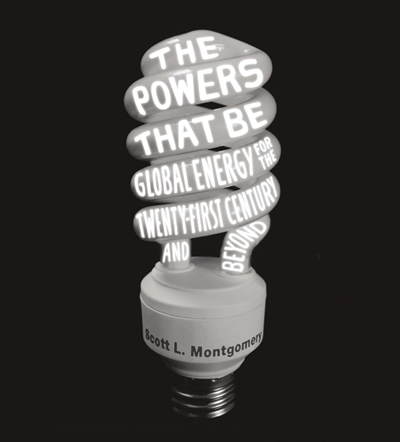
Cover courtesy of The University of Chicago Press
This was supposed to be the year when the powers in Washington came together to pass new legislation on energy. Instead, it is a year that may best be remembered for an unprecedented oil spill and a missed opportunity at seriously addressing climate and energy security concerns. The announcement that the White House is being fitted for new solar panels comes as a potential sign of newly recharged aspirations, but for now the lack of a clear forward strategy simply means that these issues will only gain greater urgency. This places even greater relevance on the recently published tour de force of an energy guidebook, The Powers That Be (The University of Chicago Press, $35) by geologist and science writer Scott L. Montgomery. While conceding that a precise picture of the future is still impossible to draw, the book presents an encyclopedic account of the current landscape and a preview of the transformations and challenges awaiting us.
The decades ahead will be ruled above all else by energy pluralism, according to Montgomery, given the fact that a greater set of options now exists than ever before and with advancements continuing to take place in each case. Yet in our energy present, 80 percent of the globe is still powered by fossil fuels. There is a tremendous upward trend in demand, mollified only temporarily by the recession and led primarily by developing nations, such as China and India, which are relying to an alarming degree on their domestic coal reserves. The issue is not one of resource depletion.




 Facebook
Facebook Permalink
Permalink Digg
Digg Reddit
Reddit LinkedIn
LinkedIn StumbleUpon
StumbleUpon Tumblr
Tumblr

